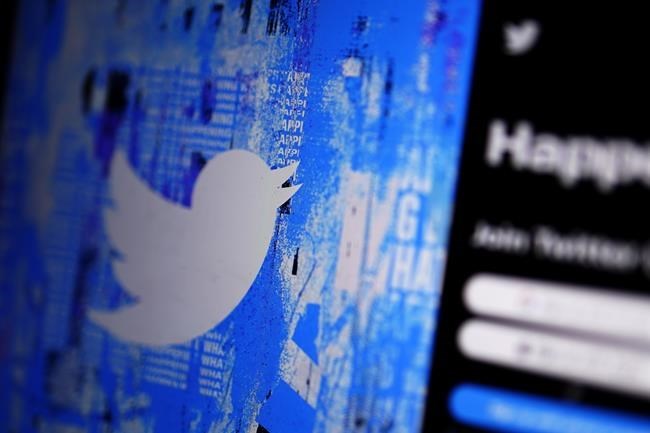TORONTO — When Elon Musk took over Twitter last November, he quickly turned his attention to the platform's highly sought-after status symbol: the blue verification check mark.
The seal of approval previously handed out to celebrities, politicians, journalists and other public figures was meant to reduce impersonation attempts, help users wade through high volumes of replies and likes and make it easier to ensure people aren't duped by parody accounts.But Musk was intent on "treating everyone equally" and boosting the revenue of the US$44 billion social media platform he had just bought, so he announced last fall he would remove the check marks for users not paying for Twitter Blue. The platform's premium subscription also offers an edit button, fewer ads and the ability to post longer videos.
Accounts impersonating Tesla, gaming giant Nintendo and pharmaceutical company Eli Lilly sprang up and paid for verification, pushing Musk to dump his check mark removal plans, but he revived them in April, yanking the symbol from accounts.
Some users were so angered they fled the platform, while others stuck around but lamented that the verification change along with several other moves Musk made that have shifted Twitter's public image.Â
And then there were the people who decided to pay. The Canadian Press asked several what made them open up their wallets.
Guy Felicella
Felicella, a Vancouver-based harm reduction and recovery advocate with 15,300 followers, wasn't drawn to subscribing to Twitter Blue because of the tick he'd see beside his username.
"That blue check mark, they could take it away today. I couldn't care less," he said.
"It doesn't matter to me."
Instead, it was text-based two-factor authentication and the ability to publish longer tweets that drew him in to forking over $155 a year (users don't need to pay for Blue to use an authenticator app). Felicella figured longer tweets mean more space for context and maybe, additional chances to connect with someone in need of his support.
Though some have left Twitter, he's sticking with the platform because he wants to help counter misinformation, especially about drug use, that he's seen spreading online.
"You've got to balance (the misinformation) out. I don't want them to take over," he said.
"I keep saying I'd rather hang out here and ruffle some feathers than just walk away from it."
Jennifer Shaigec
The Calgary-based independent director at Teako Minerals Corp. and commodity specialist for CommonStock Inc. considers herself a "Twitter addict," using the platform daily and crediting it for helping her cope with the COVID-19 pandemic.Â
"There was always someone to talk to about a common interest," she said via a Twitter direct message.
Shaigec subscribed to Blue for the features, which have reduced her ads by 50 per cent, let her tweet more than 280 characters, given her an edit button and helped her sort bookmarked posts by topic.Â
"With the volume of tweets that I send out and the number I read daily, the Twitter Blue features seem to improve my efficiency on the app," she said.
But she added they're "more of a luxury" than a necessity.
"So I can understand why some are expressing dismay that the blue check mark is geared toward the elite – or those that can more easily afford the subscription price."
Heather Stefanson
Manitoba's premier still has her blue check mark — a decision her communications team made to "protect the integrity of the account," a spokesperson said in an email.
"The subscription is covered by the PC Party of Manitoba — not taxpayers," the spokesperson added.Â
Daniel Foch
The Keswick, Ont. real estate agent with 26,700 followers decided to shell out for a monthly subscription in March, after Twitter stopped text message-based two-factor authentication for users not paying for Blue.
By then, he had grown fed up with fake accounts impersonating people and peddling cryptocurrency scams and hoped Blue might cut down on such instances.Â
"I'd get messages from people all the time telling me that there's this fake account. It's actually crazy how many times I'd get those messages," he said.
"If it eliminates that, that's worth it to me."
He still spots impersonators but feels the check mark gives his profile an added layer of authenticity and is part of a growing move toward paying for verification on other platforms.Â
Meta announced in February that it will charge Facebook and Instagram users to have verified accounts.
Simu Liu
The "Kim's Convenience" and "Shang-Chi and the Legend of the Ten Rings" star shared in mid-April that a misunderstanding about changes to two-factor authentication led him to open his wallet.
"I'm still blue because I thought I had to pay to retain two-factor authentication. They got me," he wrote in a tweet he ended with a sad face.
Olumuyiwa Igbalajobi
The Calgary-based founder of Scholarships Cafe, a platform connecting people with scholarships and other academic opportunities, tried to get verified by Twitter about five times over the last few years to help his work reach more people.
He submitted newspaper articles he appeared in and information about his work in academia, but still couldn't convince Twitter to give him the mark until Musk opened up verification to users paying $11 in November.
"When I saw the opportunity to get a tick, I felt like it was time," Igbalajobi said.
He doesn't think Twitter Blue has given his tweets more exposure or sent any more opportunities his way than having a non-verified account would, but likes that it allows him to send longer tweets.
"A couple of days ago I made a list of the top 25 scholarships in Canada and I didn't have to split those tweets," he said.
"I could do that within two minutes."
This report by The Canadian Press was first published May 3, 2023.
Tara Deschamps, The Canadian Press




